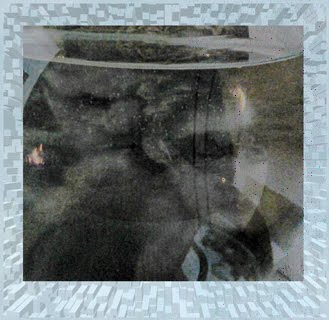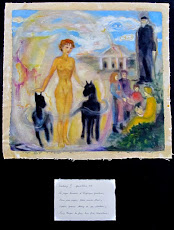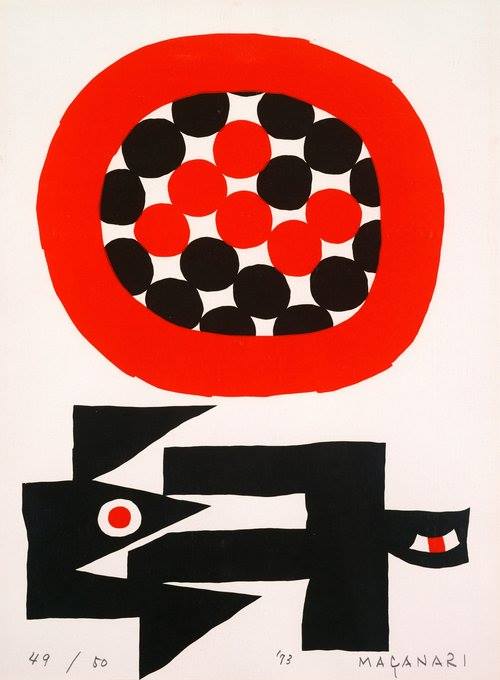THE SAAL PROCESS: HOUSING IN PORTUGAL 1974 - 76
In 1974 a political coup d'état ended the Estado Novo regime in Portugal that had been developed by António de Oliveira Salazar between 1932 and 1968 when he became ill and was replaced by Marcelo Caetano. The mostly technocratic government allowed for improvements on many levels including health care but the authoritarian regime was nonetheless unpopular at home and abroad. In April 1974 the Carnation Revolution in Lisbon and the Armed Forces Movement overthrew the Estado Novo and this led to two years of chaos in the country.
Enter the SAAL project, Serviço Ambulatório de Apoio Local, meaning Local Ambulatory Support Service. « This was a pioneering political and architectural experiment designed to address extreme housing shortages and degrading living conditions. » At that time Portugal possessed many architects that were looking for work. The new democratic government offered financial support for large scale renewal projects that would involve neighborhood associations, citizens, men and women which was unusual at that time in that region, and architects to build good housing for and with the population.
In less than 26 months, SAAL resulted in 170 projects involving 40 000 families.
THE EXHIBITION
The curator of the exhibition is DELFIM SARDO in association with the Serralves Museum of Contemporary Art, Porto and the CCA. To make sense of the momentous event being considered, it was decided to focus on ten influential SAAL projects.
The moment you are about to enter the central exhibition galleries you are greeted with vintage revolutionary posters, photographs, news clippings and slogans. Some citizens of Portugal were living under such horrendous conditions, it is shocking for us to be reminded of certain states of squalor they had to endure. As usual @ CCA the exhibition is
equipped with many useful tools to assist visitors so they can get as precise a sense of what was going on as possible. One of the installations I really enjoyed was produced by ARTUR ROSA. By 1979 many SAAL projects had to be dismantled. Artur Rosa repurposed the original architect drawings for the Bela Flor project by working them in a series of collage compositions with his photographs of the neighborhood children. It is very touching.
By the end of your tour you will understand Portugal deeply, from the layers of its geography to the extraordinary spirit of its people. You so rarely see people come together like they did in this amazing uprising. They show us what can happen when people work together. There are many photographs of where the neighborhoods are at now that are also compelling.
In less than 26 months, SAAL resulted in 170 projects involving 40 000 families.
THE EXHIBITION
The curator of the exhibition is DELFIM SARDO in association with the Serralves Museum of Contemporary Art, Porto and the CCA. To make sense of the momentous event being considered, it was decided to focus on ten influential SAAL projects.
The moment you are about to enter the central exhibition galleries you are greeted with vintage revolutionary posters, photographs, news clippings and slogans. Some citizens of Portugal were living under such horrendous conditions, it is shocking for us to be reminded of certain states of squalor they had to endure. As usual @ CCA the exhibition is
 |
| One of my favorite videos shows an entire community helping a neighbor move his home. / Une de mes vidéos favorites montre une communauté entière qui aide un voisin à déménager sa maison. |
By the end of your tour you will understand Portugal deeply, from the layers of its geography to the extraordinary spirit of its people. You so rarely see people come together like they did in this amazing uprising. They show us what can happen when people work together. There are many photographs of where the neighborhoods are at now that are also compelling.
LE PROCESSUS DU SAAL : LE LOGEMENT AU PORTUGAL DE 1974 À 1976
En 1974 un coup d'état politique a mit fin au régime Estado Novo au Portugal qui avait été développé par António de Oliveira Salazar entre 1932 et 1968 alors qu'il est tombé malade et a été remplacé par Marcelo Caetano. Le gouvernement plutôt technocratique avait permi plusieurs améliorations surtout dans le système de la santé, mais le régime authoritaire n'était pas populaire ni dans le pays ni à l'étranger. En avril 1974 la Carnation Revolution à Lisbonne et les Armed Forces Movement ont renversé l'Estado Novo et ceci a mené à deux années chaotiques dans le pays.
Arrive le projet SAAL , Serviço Ambulatório de Apoio Local, ou Service ambulant de soutien local.
« Ce projet lancé par le gouvernement déploya des architectes dans l'ensemble du territoire portugais afin d'élaborer des solutions résidentielles qui donnent une place dans la ville aux populations défavorisées. » À ce temps là, le Portugal possède beaucoup d'architectes à la recherche d'un poste. Le nouveau gouvernement démocratique a offert du support financier pour réaliser un large projet de renouvellement qui impliquerait les associations de quartier, les citoyens, hommes et femmes ce qui était rare à cette époque et dans cette région, avec les architctes pour bâtir des bons logements pour et avec la population. En moin de 26 mois, SAAL a réalisé 170 projets qui ont impliqué 40 000 familles.
L'EXPOSITION
Rendu à la fin de votre visite vous comprendrez le
-LENA GHIO
Le commissaire de l'exposition est DELFIM SARDO en association avec le Serralves Museum of Contemporary Art, Porto et le CCA. Pour faire du sens de l'événement historique qui est présenté, il a été décidé de mettre l'accent sur dix projets SAAL influents.
Dès que vous arrivez à l'entrée des salles centrales du musée, vous êtes acceuillis par des affiches, des photographies, des découpures de journeaux et des slogans millésimés. Certains citoyens du Portugal vivaient dans des conditions tellement horribles, que c'est choquant pour nous de se faire rappeler de certains états de misère qu'ils avaient à endurer. Comme toujours @ CCA l'exposition est munie d'outils utiles pour aider les visiteurs à bien comprendre tout ce qui se passe. Une des installations qui m'a beaucoup plu a été réalisée par ARTUR ROSA. Rendu en 1979 plusieurs projets SAAL ont dû être démantelés. Artur Rosa a réutilisé les dessins d'architectes originaux du projet Bela Flor pour réaliser des compositions de collages avec des photos qu'il avait pris des enfants du voisinage. C'est très touchant.
 |
| Delfim Sardo Photo © Lena Ghio 2015 |
Portugal profondément, depuis les couches de sa géographie jusqu'à l'esprit extraordinaire de son peuple. C'est très rare de voir du monde s'unir pour une bonne cause comme l'ont fait ces gens. Ils nous confirment que c'est possible d'oeuvrer ensemble vers un but commun pour le bénéfice de tous. Vous verrez aussi plusieurs photos de l'état actuel des quartiers affectés par le SAAL.
-LENA GHIO



























No comments:
Post a Comment